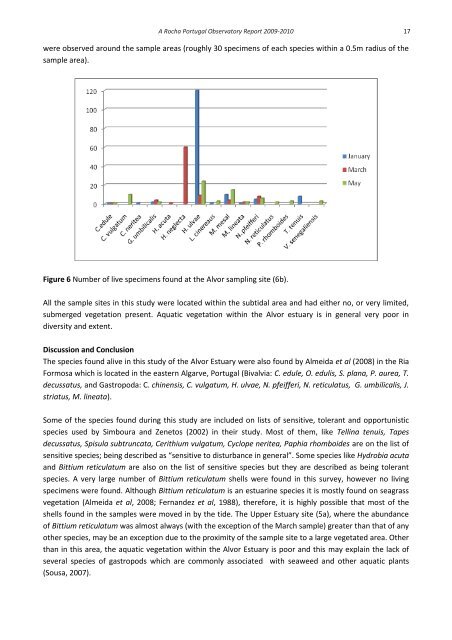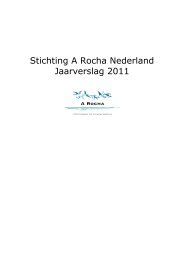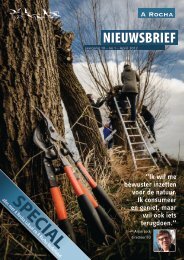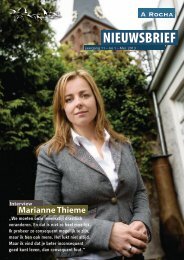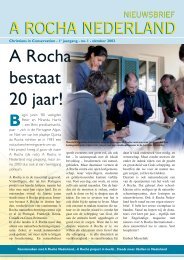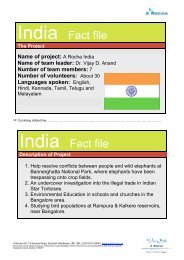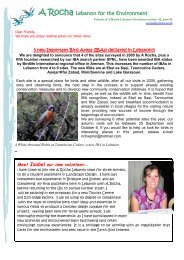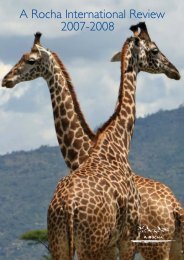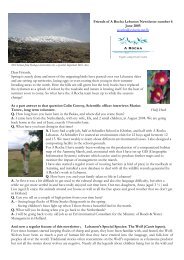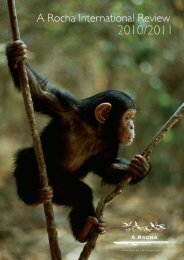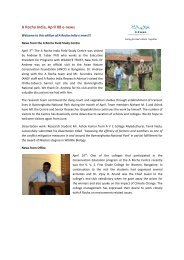A Rocha Portugal Observatory Report 2009-2010
A Rocha Portugal Observatory Report 2009-2010
A Rocha Portugal Observatory Report 2009-2010
You also want an ePaper? Increase the reach of your titles
YUMPU automatically turns print PDFs into web optimized ePapers that Google loves.
A <strong>Rocha</strong> <strong>Portugal</strong> <strong>Observatory</strong> <strong>Report</strong> <strong>2009</strong>-<strong>2010</strong> 17<br />
were observed around the sample areas (roughly 30 specimens of each species within a 0.5m radius of the<br />
sample area).<br />
Figure 6 Number of live specimens found at the Alvor sampling site (6b).<br />
All the sample sites in this study were located within the subtidal area and had either no, or very limited,<br />
submerged vegetation present. Aquatic vegetation within the Alvor estuary is in general very poor in<br />
diversity and extent.<br />
Discussion and Conclusion<br />
The species found alive in this study of the Alvor Estuary were also found by Almeida et al (2008) in the Ria<br />
Formosa which is located in the eastern Algarve, <strong>Portugal</strong> (Bivalvia: C. edule, O. edulis, S. plana, P. aurea, T.<br />
decussatus, and Gastropoda: C. chinensis, C. vulgatum, H. ulvae, N. pfeifferi, N. reticulatus, G. umbilicalis, J.<br />
striatus, M. lineata).<br />
Some of the species found during this study are included on lists of sensitive, tolerant and opportunistic<br />
species used by Simboura and Zenetos (2002) in their study. Most of them, like Tellina tenuis, Tapes<br />
decussatus, Spisula subtruncata, Cerithium vulgatum, Cyclope neritea, Paphia rhomboides are on the list of<br />
sensitive species; being described as “sensitive to disturbance in general”. Some species like Hydrobia acuta<br />
and Bittium reticulatum are also on the list of sensitive species but they are described as being tolerant<br />
species. A very large number of Bittium reticulatum shells were found in this survey, however no living<br />
specimens were found. Although Bittium reticulatum is an estuarine species it is mostly found on seagrass<br />
vegetation (Almeida et al, 2008; Fernandez et al, 1988), therefore, it is highly possible that most of the<br />
shells found in the samples were moved in by the tide. The Upper Estuary site (5a), where the abundance<br />
of Bittium reticulatum was almost always (with the exception of the March sample) greater than that of any<br />
other species, may be an exception due to the proximity of the sample site to a large vegetated area. Other<br />
than in this area, the aquatic vegetation within the Alvor Estuary is poor and this may explain the lack of<br />
several species of gastropods which are commonly associated with seaweed and other aquatic plants<br />
(Sousa, 2007).


